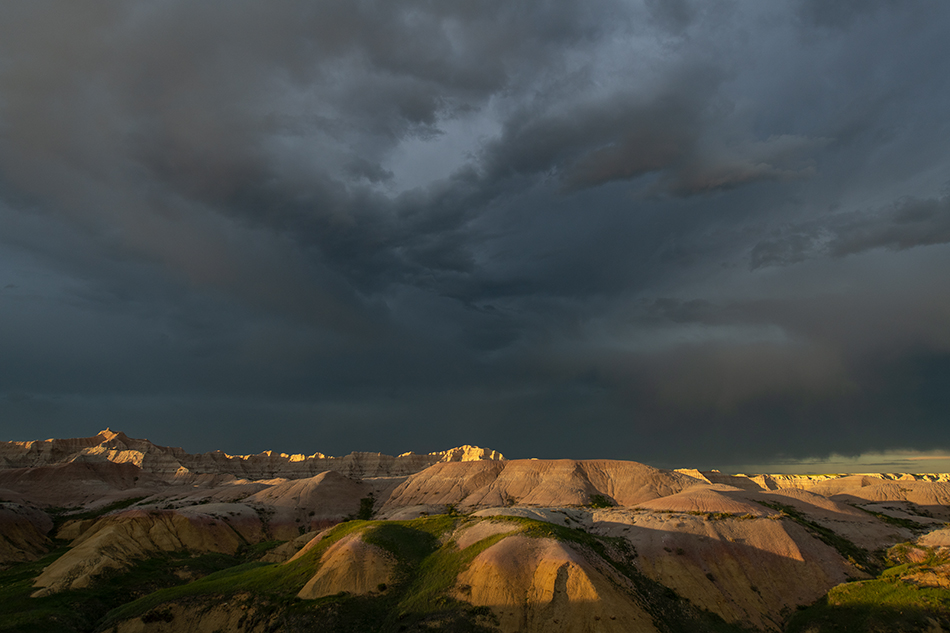
Wall, South Dakota. Badlands NP
I just returned from teaching a photo workshop in the Badlands, and we experienced some of the wildest weather I have ever seen. We knew June would be good for newborn bison and bighorn sheep, green prairies and wildflowers. We hoped we might get some good thunderstorms, but we didn’t expect supercells moving through day after day!

Wall, South Dakota. Badlands NP
Photographing bad weather requires a few things. First, get a radar and weather app on your phone. There are many to choose from, and these are critical in predicting storm paths and keeping you safe. Ideally, you can position yourself to the side of a major storm so you can safely photograph it. Lightning is dangerous; if you are on a high point photographing you need to take cover if the storm is getting close. Lucky for us our lighting and storm shooting was on the edge of these storms, and we never experienced hail or close lightning strikes.

Wall, South Dakota. Badlands NP
A good tripod really helps. If you are photographing storm clouds, then you might be able to hand hold your camera in high winds and low light. But if you are photographing lightning, you need to be on a tripod. Carry a cleaning cloth in your pocket. Rain is likely and you need to keep wiping the front of your lens if it is getting wet.

Wall, South Dakota. Badlands NP
Lightning is the most challenging, and a riot to photograph. Everyone is trying to get the shot, and there is definitely some luck involved in getting the best strike. My favorite time to photograph lightning is twilight. Low light allows you to use a slow shutter speed of multiple seconds (use your slowest ISO, and close down your aperture), but you still get detail in the landscape. If it is really bright out, then you will need to use a lightning trigger. These devices trigger your flash when a lighting bolt occurs. I use the simple lightning trigger by AEO, and after I got it adjusted, it helped me capture bolts at twilight. If it is dark, then simply use a long exposure like 10 seconds or more. If the storm is really active, you may record multiple strikes in the same frame. Set your exposure to underexpose the scene 1-2 stops. When lightning strikes, you need to be underexposed or your image will be too bright. I use manual focus and prefocus on a distant spot. If it is totally dark, you may need to set your focus on infinity similar to shooting star trails.
The top image is one of my favorites. Mammatus clouds are often associated with severe thunderstorms, and provide great graphic shapes to clouds. I couldn’t believe how extensive the mammatus clouds were. The road provided a nice leading line…into the tempest we go! Join our workshop next year at the same time for another wild experience in the badlands.